Mailchimp works with WooCommerce to sync client data and segment email marketing. This post guides you from setup to execution, and shows how to tweak campaigns to boost conversions.
Table of Contents
Understanding Mailchimp and WooCommerce Integration
Mailchimp has a site for eCommerce. It helps engage customers with personalized emails, automation, and segmentation. It also supports predictive analysis, a vital tool in the mastery of the tendencies of customers leads to appropriate marketing approaches. Also, follow-ups have been created for abandoned carts, and product recommendations for shoppers, which is especially helpful when trying to make a sale and retain a shopper.
Why Integrate with WooCommerce?
Integrating WooCommerce with MailChimp automates data syncing. It enables a better email marketing plan. This integration makes it easier to capture client data directly from WooCommerce. This enables more precise and timely emails, boosting sales, engagement, and retention. Real-time data syncs with client interactions and preferences, ensuring marketing campaigns stay current.
Step-by-Step Guide to Integration
- Set up a Mailchimp Account: First, visit MailChimp’s website and create an account. The free basic plan is ideal if you’re new to email marketing.
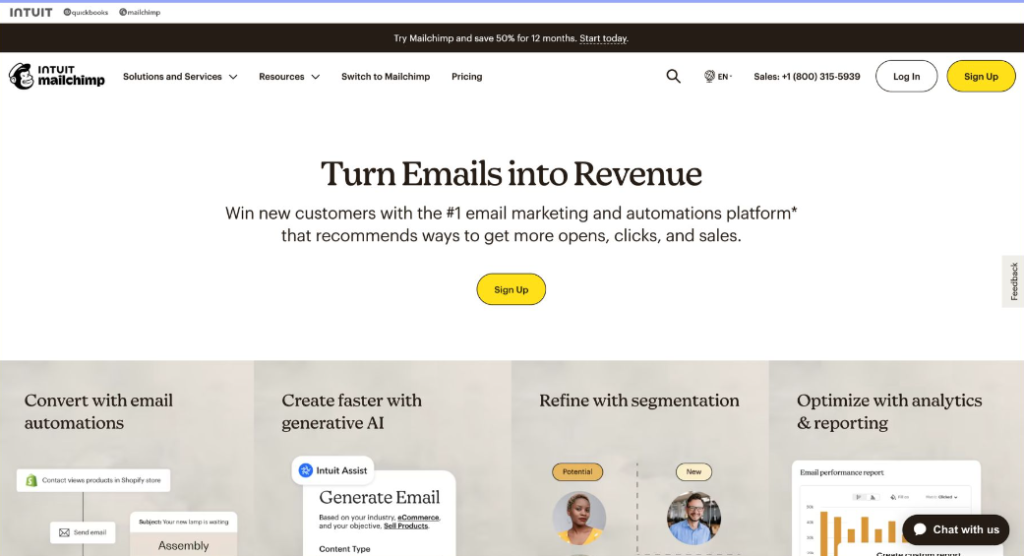
- Install the Mailchimp for WooCommerce Plugin: Go to your WordPress dashboard. Then, go to ‘Plugins > Add New’. Search for ‘Mailchimp for WooCommerce’, then install and activate the plugin. This sets the foundation for syncing your WooCommerce store with Mailchimp.

- Sync Your Customer Data and Products: After you’ve activated the plugin, go to WooCommerce settings and find ‘Mailchimp for WooCommerce.’ Connect your Mailchimp account there. You must authorize the connection by logging in to your MailChimp account. You can configure the data to sync after authorization, including customer details, order history, and product information.

- Configure Email Marketing Settings: Optimise your email marketing campaigns by configuring MailChimp’s settings after you’ve set up data synchronization. As part of this process, you can use segmentation to send more targeted emails and set up automated responses based on consumer actions like abandoned carts and recent sales.
How to Create Effective Email Campaigns?
- Designing Your Emails
Mailchimp’s design features help create effective email layouts. Start with a responsive design that matches your brand’s style to create appealing email templates. Mailchimp has pre-designed templates that can be customized with drag-and-drop elements, including audience-relevant graphics, text, and logos. Design emails that adapt to multiple devices and use multimedia to personalize the message. Email design should have clear calls-to-action (CTAs) to encourage recipients to visit your website or buy.
- Segmentation and Personalization
Mailchimp’s segmentation and personalization tools help you target certain client segments. Use Mailchimp’s audience segmentation to categorize clients by behavior, demographics, or purchase history. You can deliver personalized emails to different segments’ interests and needs. For instance, you can give returning customers customized promos or new subscribers customized information.
- Automation
Automating cart abandonment and order confirmation routines in Mailchimp can boost email marketing productivity. A few hours after a consumer abandons their shopping, configure the workflow to send a reminder email. Additional reminders may be sent if the purchase remains unfinished. Automate email order confirmations right after purchase to reassure customers and record their order.
Understanding WooCommerce Analytics
WooCommerce’s analytics dashboard helps you analyze and understand key data for online business growth and efficiency.
Key Metrics and Performance Indicators
In WooCommerce, the analytics panel has several detailed reports and more advanced tools for filtering and segmenting. You can download all the data as CSV files and change how your screen looks to keep an eye on the most important business metrics. Here are some of the most important success indicators:
- Total Sales: Calculated as Gross Sales minus Returns and Coupons, plus Taxes and Shipping.
- Gross Sales: The sale price of products multiplied by the quantity ordered. This figure does not include refunds, coupons, taxes, or shipping costs.
- Net Sales: Represents Gross Sales minus Returns and Coupons.
- Orders: The number of new orders placed within a selected date range.
- Items Sold: The total number of individual items sold.
- Average Order Value: Calculated by dividing Net Sales by number of Orders.
- Refunds and Discounts: Kept records of cash refunds to customers and other instances of discounts given, to determine customer loyalty and promotional activities success.
- Total Tax: The sum of Order Tax plus Shipping Tax.
- Order Tax: The total tax applied to items in an order.
- Shipping Tax: The total tax applied to shipping charges in an order.
- Shipping: The shipping charges associated with an order or refund.
The dashboard also allows you to view and change reports on sales trends, product success, and customer activities. For more in-depth research, you can filter data by different time periods. This will help you keep up with your store’s performance.

Advanced Filtering and Customization
You can get very specific with WooCommerce Analytics’ filtering and segmentation tools, which let you look into customer demographics, purchase histories, and shopping habits. This information is needed to confirm that marketing plans and inventory levels are optimized based on customer trends and tastes.
You can change the dashboard only to show you the most helpful info. This includes making personalized reports and getting data to look at it more deeply. You can share data as CSV files, which helps do in-depth analyses with outside tools, or share your findings with your team.

Utilizing These Metrics
To get a good picture of how well your store is doing, you need to understand these measures. They let you do these things:
- Analyze Revenue Streams: Discuss the concept of gross and net revenue to capture the influence of return and discount on the revenues.
- Monitor Customer Behavior: Monitor order processing, average order and, items sold to determine buying behavior.
- Evaluate Promotions: Assess the effectiveness of coupons and discounts by looking at discounted orders and net discount amounts.
- Manage Taxes and Shipping: Monitor order tax, shipping tax, and shipping charges to guarantee accurate billing and compliance.
- Track Digital Product Performance: Use the downloads metric to monitor the popularity of digital products.
Getting Started with WooCommerce Analytics
To begin using WooCommerce Analytics:
- Check the Compatibility: Verify that your store is running on WordPress 5.3 or higher.
- Navigate to Analytics: Access the analytics dashboard by going to Analytics > Revenue in your WordPress admin panel.
- Customize Your Dashboard: Use the customizable features to display the most relevant data for your store.
- Import Historical Data: If you have existing orders, you may need to import historical data to populate your reports fully.
- Set Up Advanced Filters: Utilize advanced filtering options to focus on specific metrics and datasets that align with your business goals.
Alternatives to Mailchimp: What to Look for
Selzy
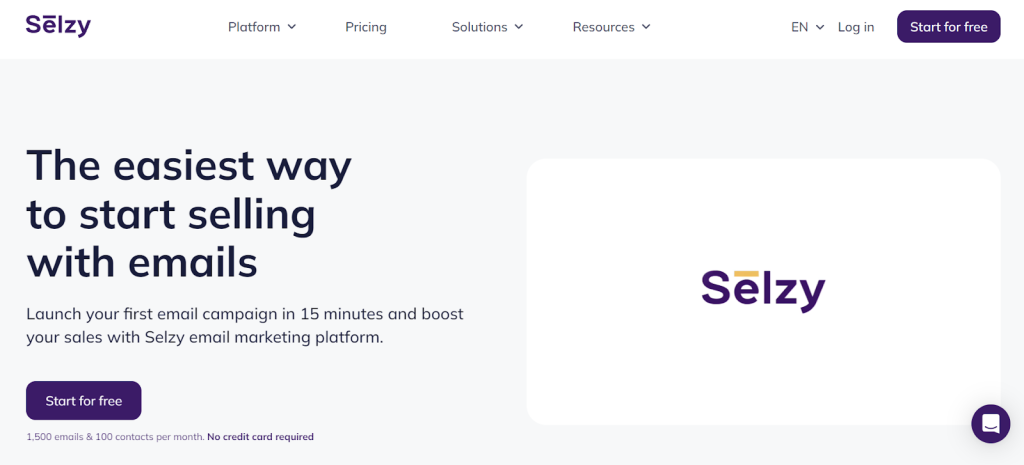
Selzy is a cheap and easy-to-use email marketing service, popular for its powerful automatic tools and simple interface. It’s well-known for its drag-and-drop email maker. Selzy also offers many templates and personalization choices, making sending messages exactly what the recipient wants and needs easier.
One of Selzy’s most important features is its segmentation tools, which let marketers divide their audience into smaller groups so that they can send more targeted messages. It also contains many automation features that let users set up complicated email processes based on what subscribers do. Selzy also offers AI-driven ideas on how to make campaigns more effective, such as personalizing email subject lines and content.
The price offered through Selzy is fair; for $7 monthly, the user can send indefinite emails. They should consider it, especially for the small to medium-scale enterprises. They can expand their e-mail campaign all in cheap. However, Selzy misses all sorts of extra bonuses that come with other comparable products and even the features of more expensive goods.
ActiveCampaign
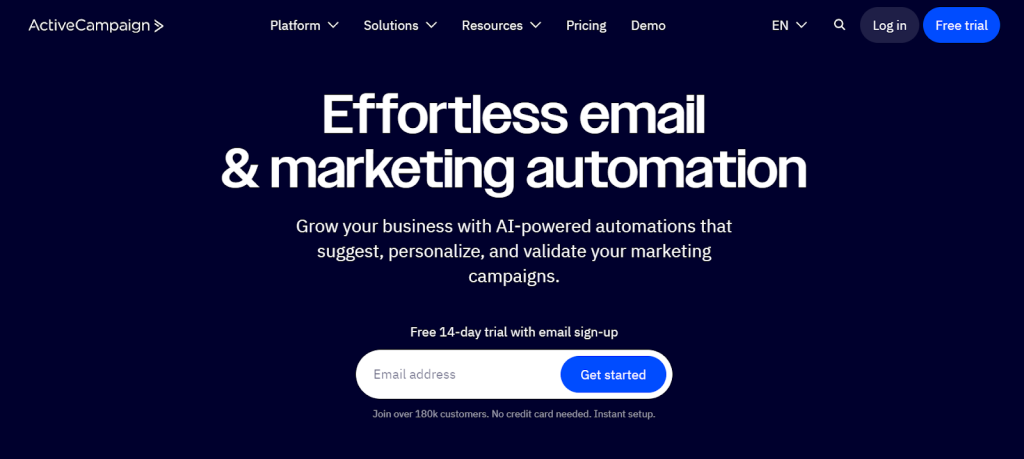
ActiveCampaign is a popular email marketing tool. It is known for its advanced automation and CRM integration features. It works best for companies needing to track complex marketing automations and detailed customer paths. Prices start at $29 monthly for the Lite plan, which comes with basic tools like CRM, email marketing, and automation. ActiveCampaign has more advanced plans for businesses that want to add more features. These plans include sales automation, lead scoring, and greater data integrations.
The system supports SMS marketing and lets you add dynamic content to emails. ActiveCampaign is a great tool for businesses. It automates complex marketing tasks. It sends relevant messages based on each customer’s actions and preferences.
ConvertKit
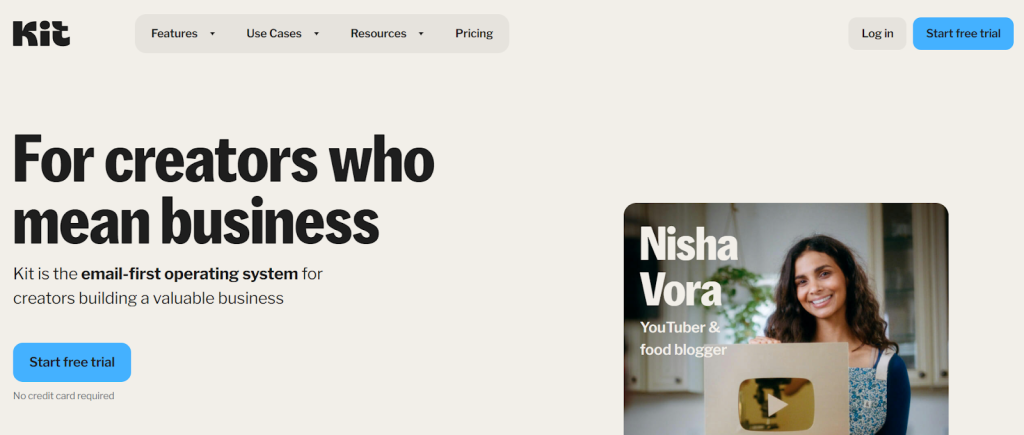
ConvertKit is an email marketing platform mainly used by bloggers, writers, podcasters, YouTubers, and other content creators, and small businesses. It simplifies the management of audiences that creators make, through lead capture, segmentation, email marketing, and auto funnels.
One great thing about ConvertKit is that it has a visual automation builder that makes it easier to set up complicated subscriber workflows and send relevant content at the right time. This, along with the platform’s ability to create and handle tags and segments, lets you put subscribers into detailed and changing groups based on how they interact and behave.
ConvertKit also has a variety of email and landing page templates that can be changed to fit your needs. However, these templates are more useful than flashy, emphasizing simplicity and content delivery over complex design. This fits well with the needs of writers who care more about the content than the look of their emails.
However, its price can be a problem for people on a tight budget, especially since the more advanced features cost more. The website starts at $15 a month for up to 300 users with the Creator Plan. The prices go up for the Creator Pro based on the number of subscribers. The service has a free tier that’s good for new artists, but as their needs grow, the price goes up based on the number of subscribers.
Moosend
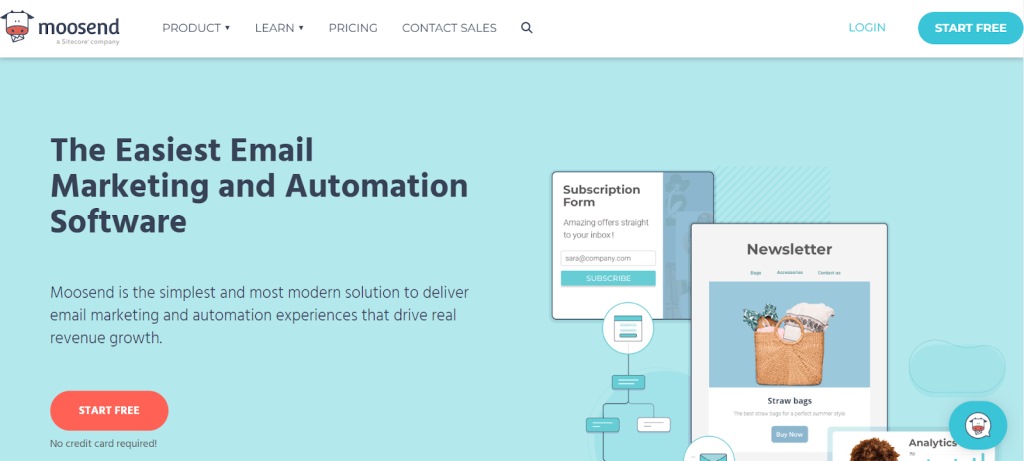
Moosend is an email marketing product that is affordable and full of useful features. Companies can use it to handle their email campaigns and marketing automation efficiently. The service has many useful tools. They include a drag-and-drop email builder, advanced segmentation, and automation tools.
The best thing about Moosend is that it can automate tasks. This lets you make thorough workflows that can be changed based on what users do, which makes targeted marketing more effective. Plus, Moosend has powerful reporting tools that help you track how well your email campaigns are doing by showing you data like open rates, click rates, and subscriber activity.
Starting at $9 a month for up to 500 subscribers, Moosend is a very affordable choice for growing businesses. Each plan comes with full access to all features and unlimited emails. When there are more needs, the prices go up to suit more subscribers.
The email builder may not have enough design choices for some users. This is especially true for creative agencies or people who need highly stylized email campaigns. Moosend also works well with several popular applications but might not have direct links with some specialized tools. Some users might need to use extra integration tools like Zapier.
Sendinblue
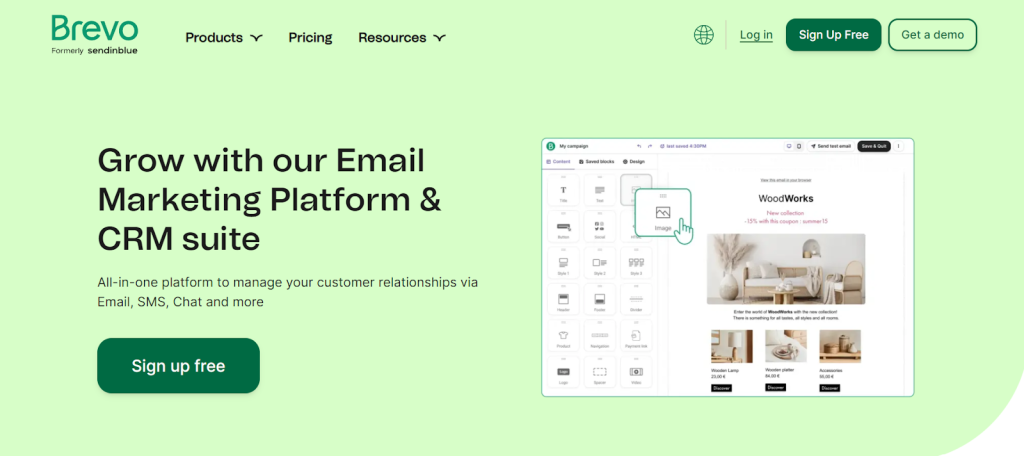
Brevo, formerly Sendinblue, is an effective tool for email and SMS marketing. It’s praised for its user-friendly design, customization, and automation. The free plan is generous, allowing 300 emails daily and unlimited contacts.
Sendinblue’s advanced CRM features are one of its best features. They make it easy to handle contacts right inside the website. Businesses that want to make their marketing and sales more efficient will benefit the most from this combination. SendinBlue also offers complete transactional email tools that are simple to set up and provide detailed tracking and data for every email, which is very important for online stores.
A/B testing and advanced analytics are also built into the tool. This gives marketers the tools they need to make ads work better and get better results. Sendinblue also works well with popular e-commerce solutions like Shopify and WooCommerce, and it has features like “abandoned cart recovery” that are essential for increasing sales.
Sendinblue has reasonable prices and plans that can be changed based on the number of emails sent, so companies only pay for what they need.
Final Words
The combination of MailChimp and WooCommerce allows for personalization, automation, and data synchronization, all of which contribute to optimizing your email marketing campaigns. If you follow the methods provided, you can design email campaigns that connect with your target audience, leading to more conversions and long-term success in online shopping.

Andrej Fedek is the creator and the one-person owner of two blogs: InterCool Studio and CareersMomentum. As an experienced marketer, he is driven by turning leads into customers with White Hat SEO techniques. Besides being a boss, he is a real team player with a great sense of equality.
